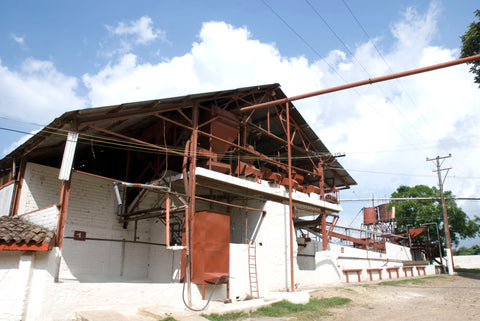The next step coffee goes through after it has grown and been harvested, is processing. Which is an important step, because it can have a dramatic effect on how the coffee tastes. In this step the green coffee beans are removed from the fruit, dried and are prepared for transport. Most of the time the harvest from small farms is processed with other nearby farms. however, the demand of single origin microlot coffees makes them do their own processing or under their supervision, to keep their coffee separate from other farms coffee.
There are two main processing styles, washed and natural. The style which gets chosen depends on local tradition and access to water. In some cases coffee producers choose a processing method based on what their customers want.
• Washed (wet) coffee:
The cherries go through a machine to remove the outer skin, leaving the sticky mucilage, or pulp. The beans then are soaked in water for a period from hours to a day or two, which cause the pulp to fall off. After that, the beans are rinsed, washed, and allowed to dry. Usually in the sun on patios or raised bed. The drying takes a few days depending on the sunlight and climate. It results in coffee with high acidity and more consistency. That’s what makes it the most common method.
• Natural (dried) coffee:
it's the oldest method of processing coffee. The cherries are dried in the sun after harvesting them. Some farmers use sun patios others use special raised drying tables for better airflow. After getting dried properly, the outer skin and the fruit are removed mechanically or by hand. Then the coffee is stored. This results in coffee with more body and less acidity.
• Pulped natural coffee (honey processing):
it's a mix between the two methods. The coffee get de-pulped by removing the outer skin but leaving the mucilage on, then it's dried. This results in more consistent quality than dry processed coffee. Also the surrounding mucilage - which is high in sugar – causes a noticeable increase in sweetness.
• Wet hulling :
it starts like the pulped natural processing, except the coffee is only dried for a day with the mucilage attached, then the beans are washed, dried partially, then hulled to remove the parchment before the beans finish drying. It results in coffee with heavy body and low acidity.
• anaerobic :
The coffee is delivered, while still in cherry, to stainless steel tanks for fermentation, as they offer the most cleanliness but also help maintain lower temperatures. They are located in a shaded, cool place in the mill, and are completely sealed with only a bubbler, which allows gases to escape, creating an anaerobic environment within. Temperature and pH are checked twice a day, and once it reaches a pH of 4.3 (1-2 days), it is opened and the cherry is taken to the drying stations. For this lot, there are three stages of drying that the coffee must undergo. Firstly, Fermented cherry is pre-dried for 2days on cool clean ceramic floors. Next, cherry is taken to raised beds, where the temperature is kept between 28.Cand 45.C for 10 days. Finally, the coffee is placed in a mechanical dryer known as ‘Guardiolas’ for the final day
After processing the coffee beans are stored for one to three months to help balance their moisture level. Then they are sorted by size, which helps make the roasting easier. Ideally it should arrive within a year of harvest, which all our coffees do.




